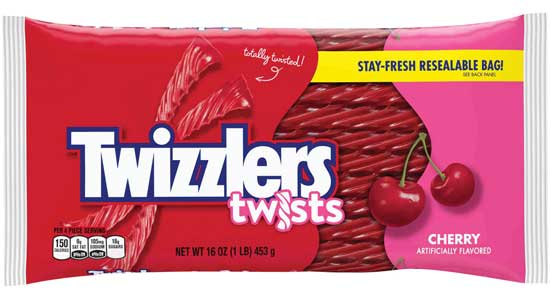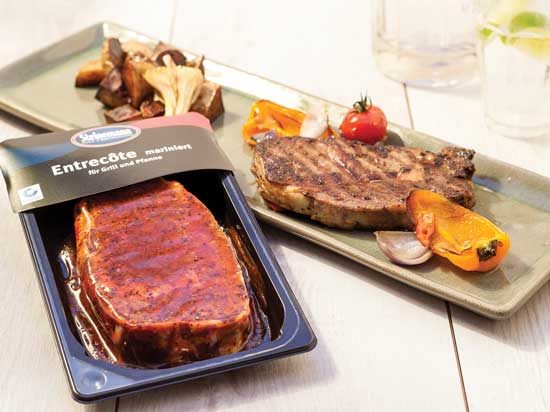Reducing Food Waste in Packaged Food
PACKAGING
Reducing food waste is a major challenge for the food packaging industry. Worldwide, approximately 60% of consumers live in urban areas that rely on packaging to extend the shelf life of their food. While many packaging technologies to prevent food waste already exist, implementation is often stalled because of the lack of profit potential and misaligned cost and benefits. Successful package design expands the business case beyond food waste to offset the initial technology investment and meaningfully address sustainability, thereby increasing the profit potential of innovations to reduce food waste.
Expanded Business Case = Better Packaging Solutions
The expanded business case for packaging that reduces food waste is linked to package sustainability, social responsibility, and profit. A recent ReFED report quantified the business opportunity of packaging solutions to prevent food waste. “ReFED’s roadmap allows innovators and investors to understand both impact and the business case of broad food waste solutions,” explains Sarah Vared, interim director of ReFED and principal at MissionPoint Partners. In the analysis, packaging that reduces food waste has a net economic value of at least $1 billion after initial financial investment. This economic benefit helps drive packaging food-waste solutions.
At first glance, the complexity of packaging solutions seems daunting in comparison to other identified solutions such as date labeling or improved coordination/analytics that involve the same solution from product to product. Packaging solutions are more complex because strategies to extend shelf life vary for different foods. Connecting packaging solutions to halt the major basic degradative reactions between categories provides perspective and similar solutions. For example, the shelf life of packaged cereal, peanuts, and meat benefit from packaging technologies that limit oxygen and control moisture even though the degradative reactions and reaction rates are very different for each product. For these products, moisture and oxygen barriers, modified atmosphere packaging (MAP), moisture and oxygen absorbers, oxygen absorbing film, edible barriers (including antimicrobial films for meat), nanotechnology, and intelligent packaging are often considered. Connecting packaging solutions across categories helps focus the business potential in pursuing package solutions to reduce food waste in vast food product portfolios.
When packaging design to reduce food waste is linked to sustainability, social responsibility, and increased profit, the business potential for these packaging solutions to reduce food waste improves. Pac, Packaging Consortium; American Institute for Packaging and the Environment (Ameripen); and other packaging organizations showcase a stunning array of solutions to reduce food waste that have persuasive business cases. Many factors are intertwined to result in a successful redesign. For example, polyethylene terephthalate (PET) is frequently selected as a packaging material because of its low cost, high recycling rates, ease of thermoforming, ability to control barrier and alter design to accommodate portion control, and consumer-friendly features. The PET cup that holds POM Wonderful pomegranate arils enables waste reduction as well as entry into the high-margin, brand-driven ready-to-eat refrigerated peeled fresh fruit category. The business case for POM Wonderful’s PET package included the recyclability of PET, a profitable connection to health, and reduced food waste.
The packaging of other fruits holds promise when package design to reduce food waste is linked to consumer storage and appliance use. “Technology exists to generate appropriate temperatures, relative humidity, and gas mixtures within appliances based on the location of storage,” says Danny Carballo, food preservation engineer, GE Appliances. Different foods require different refrigerator conditions to halt oxidation, microbial growth, nutrient degradation, and overall decay. For example, strawberries require 32°F–36°F, 90%–95% relative humidity, and a specific gas mixture for optimal shelf life. Most refrigerators are set at 40°F, 80%–90% relative humidity, and 21% oxygen. Carballo believes that an understanding of the connection between packaging and appliances may offer cost-effective solutions to decrease food waste. Package design can dictate where food should be stored in an appliance, and intelligent packaging that links to appliances has potential. “For example,” Carballo explains, “if strawberries are placed in storage bins, air circulation decreases, which results in increased humidity desirable for increased strawberry shelf life. Sophisticated refrigerators offer more direction on proper storage for product[s] such as strawberries as well as for meats, cheeses, and vegetables often stored within labeled drawers.” This means that packaging designed to fit optimally within a defined location would increase product shelf life.
 A Link Between Sustainable Packaging and Food Waste
A Link Between Sustainable Packaging and Food Waste
At the core of using packaging to reduce food waste is that packaging solutions to prevent food waste often mean more packaging. This extra packaging generally increases costs, impacts profits, and/or translates to higher retail prices. For 63% of consumers, package sustainability drives purchase decisions. So addressing package sustainability concurrent with decreasing food waste is critical. More specifically, to succeed with consumers, packaging needs to address food waste while being less visible, more responsible in controlling portions and serving sizes, and more responsive to brand growth. “We are seeing a growing recognition of the circular economy, and the role of packaging in facilitating connections is remarkable. Innovations that capitalize on the positive roles of packaging, such as the social responsibility of sustainability and nutrition and innovation in design as well as prevent food waste, are most promising,” says Rachel Morier, director of sustainability, Pac, Packaging Consortium. She sees the natural connection between food waste and packaging sustainability. Ameripen echoes this concept in its initiatives. Similar connections are being made at conferences and research institutes. For example, SAVE FOOD, a global initiative on food loss and waste reduction, will be presented this year at packaging trade shows such as Interpack and the Shanghai World of Packaging to highlight the role of sustainable packaging in reducing food waste. Other initiatives such as those by the McGill Center for the Convergence of Health and Economics and the Global Pulse Innovation Platform (PIP) will highlight the types of packaging selected by people who lead healthy lifestyles.
 “So while packaging is a viable solution to reducing food waste, it is also a very visible cause for alarm by consumers. When packaging is improved to reduce food waste, the amount of packaging may increase,” Vared says. For example, the extra packaging adjusted with sections that keep products fresh are often perceived by consumers as excessive. The barrier pouch by Bemis, Neenah, Wis. (bemis.com), used for Hunt’s Recipe Ready Tomato Paste eliminates the waste associated with consumers opening an entire can of tomato paste when they need only a few tablespoons for recipes. When compared to a can of tomato paste, the pouch generates less packaging waste by weight and volume. But this is a complex life cycle analysis (LCA) since steel cans are recyclable, and the barrier pouch by Bemis is not. Other business cases are more concrete and rapidly resonate with consumers. The pressure-sensitive resealable FreshPak by Sealstrip Corp., Gilbertsville, Pa. (sealstrip.com), used to package Hershey’s Twizzlers candy requires 43% less packaging film, resulting in increased line speeds. The business case to reduce food waste during intermittent consumption of Twizzlers was comprehensive since it reduced package cost and polymer use, which improved sustainability and enhanced the brand. Likewise, the thermoform stretch film by Multivac, Wolfertschwenden, Germany (multivac.com), doubled the shelf life of Dovecote Park meat while reducing the amount of packaging material. Similar solutions are offered by Sealpac, Poole, England (sealpac-uk.com). PurPod by Club Coffee, Toronto (purpod100.com), also delivers a complex business case; the pod for single-serve coffee is 100% compostable. A barrier package by Sealed Air, Charlotte, N.C. (sealedair.com), provides individually wrapped vacuum packaging for chicken breasts as well as a solid business case. The barrier package eliminates freezer burn, allows consumers to see the contents, aligns with automated poultry processing, and cost-effectively reduces cross-contamination. Similarly, Sealed Air’s dual compartment Marinade on Demand reduces food waste and packaging material.
“So while packaging is a viable solution to reducing food waste, it is also a very visible cause for alarm by consumers. When packaging is improved to reduce food waste, the amount of packaging may increase,” Vared says. For example, the extra packaging adjusted with sections that keep products fresh are often perceived by consumers as excessive. The barrier pouch by Bemis, Neenah, Wis. (bemis.com), used for Hunt’s Recipe Ready Tomato Paste eliminates the waste associated with consumers opening an entire can of tomato paste when they need only a few tablespoons for recipes. When compared to a can of tomato paste, the pouch generates less packaging waste by weight and volume. But this is a complex life cycle analysis (LCA) since steel cans are recyclable, and the barrier pouch by Bemis is not. Other business cases are more concrete and rapidly resonate with consumers. The pressure-sensitive resealable FreshPak by Sealstrip Corp., Gilbertsville, Pa. (sealstrip.com), used to package Hershey’s Twizzlers candy requires 43% less packaging film, resulting in increased line speeds. The business case to reduce food waste during intermittent consumption of Twizzlers was comprehensive since it reduced package cost and polymer use, which improved sustainability and enhanced the brand. Likewise, the thermoform stretch film by Multivac, Wolfertschwenden, Germany (multivac.com), doubled the shelf life of Dovecote Park meat while reducing the amount of packaging material. Similar solutions are offered by Sealpac, Poole, England (sealpac-uk.com). PurPod by Club Coffee, Toronto (purpod100.com), also delivers a complex business case; the pod for single-serve coffee is 100% compostable. A barrier package by Sealed Air, Charlotte, N.C. (sealedair.com), provides individually wrapped vacuum packaging for chicken breasts as well as a solid business case. The barrier package eliminates freezer burn, allows consumers to see the contents, aligns with automated poultry processing, and cost-effectively reduces cross-contamination. Similarly, Sealed Air’s dual compartment Marinade on Demand reduces food waste and packaging material.
Consumer Messaging
Few consumers acknowledge the environmental and monetary costs of food wasted because of poor packaging. Poor consumer knowledge of packaging alters reality in other ways. For example, there is a growing consumer interest in compostable packaging, but compostable packaging often lacks the barriers needed to prevent food waste. It also consumes sometimes equal (although different) resources in its LCA analyses as noncompostable packaging. Compostable packaging and reducing food waste are often connected even though composting often does not prevent consumer food waste from product purchase to fork better that other packaging. This has created confusion with consumers. “Pac’s research and research from similar organizations has confirmed that consumers need consistent messages on packaging as it relates to food waste and the environment. Consumers have the right to know that food lost due to poor packaging is usually at a higher environmental cost than the package. While packaging is a very visible effect, most packaging in use can be recycled, reused, or composted, contributing to the circular economy,” Morier says. Evidence-based LCAs guide industry in making package material selections. But most consumers need guidance as well. Explaining benefits of packaging to consumers is paramount. Educating consumers about food waste should include information on the role of packaging and its sustainability.
 Claire Koelsch Sand, PhD, Contributing Editor
Claire Koelsch Sand, PhD, Contributing Editor
President, Packaging Technology and Research
Adjunct Professor, Michigan State Univ.
[email protected]
